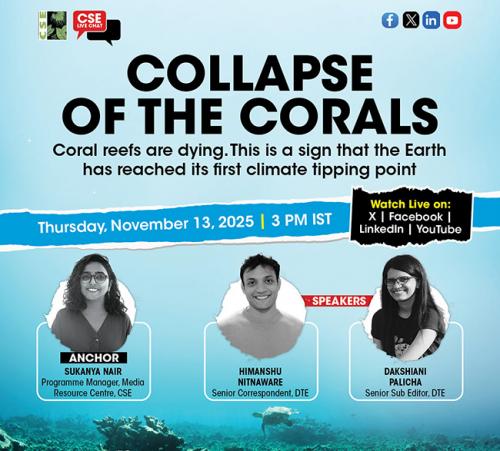Algal bloom killing marine life in South Australia is ‘disaster’, premier says – BBC

Report on the South Australian Algal Bloom: An Ecological Crisis and its Impact on Sustainable Development Goals
Executive Summary
A catastrophic algal bloom has caused extensive environmental and economic damage in South Australia, turning coastal waters toxic and leading to mass mortality of marine life. The event, described by the State Premier as a “natural disaster,” highlights critical challenges to achieving several United Nations Sustainable Development Goals (SDGs). This report analyzes the disaster’s impact through the lens of SDG 14 (Life Below Water), SDG 13 (Climate Action), SDG 8 (Decent Work and Economic Growth), and SDG 17 (Partnerships for the Goals).
Environmental Devastation and Setbacks to SDG 14: Life Below Water
The primary impact of the algal bloom is the severe degradation of marine ecosystems, representing a significant setback for SDG 14. The bloom, which has been expanding since March, now covers an area twice the size of the Australian Capital Territory.
- Violation of SDG 14.1: The rapid proliferation of algae constitutes a severe form of marine pollution, directly contravening the goal to prevent and significantly reduce marine pollution of all kinds.
- Undermining of SDG 14.2: The suffocation and death of over 400 marine species is a direct assault on the objective to sustainably manage and protect marine and coastal ecosystems to avoid significant adverse impacts.
- Threat to SDG 14.4: The destruction of fish stocks and their habitats jeopardizes the sustainability of local fisheries, impacting the goal of effectively regulating harvesting and ending destructive fishing practices.
Causality Analysis and the Urgency of SDG 13: Climate Action
The root causes of the algal bloom are directly linked to global environmental changes, underscoring the urgent need for robust climate action as outlined in SDG 13.
- The event is exacerbated by factors identified as direct consequences of climate change, including:
- Ocean warming
- Marine heatwaves
- Nutrient pollution
- This ecological disaster serves as a tangible consequence of insufficient progress on SDG 13, which calls for urgent action to combat climate change and its impacts.
Socio-Economic Disruption and Challenges to SDG 8 & SDG 1
The crisis extends beyond the environment, inflicting severe economic hardship on local communities and threatening progress on key social and economic SDGs.
- Impact on SDG 8 (Decent Work and Economic Growth): The local fishing industry has been decimated, with reports of fishermen having no income for at least three months. This economic collapse directly challenges the goal of achieving full and productive employment and decent work for all.
- Relevance to SDG 1 (No Poverty): The sustained loss of livelihood for those in the fishing and related industries creates a significant risk of pushing affected families into poverty, working against the core mission of SDG 1.
Governmental Response and Implications for SDG 17: Partnerships for the Goals
The response to the crisis has exposed a critical disconnect between state and federal authorities, highlighting challenges related to policy coherence and collaboration, which are central to SDG 17.
- The South Australian Premier has declared the event a “natural disaster” and committed A$14m in state funding for research, cleanup, and industry support.
- The federal government has also provided an A$14m assistance package but has formally refused to designate the event a natural disaster, citing that it does not meet the legal definition.
- This disagreement on classification impedes a fully coordinated response and undermines the spirit of SDG 17, which emphasizes the need for effective partnerships and policy coherence for sustainable development.
Analysis of Sustainable Development Goals (SDGs) in the Article
1. Which SDGs are addressed or connected to the issues highlighted in the article?
-
SDG 14: Life Below Water
This is the most central SDG. The article’s main subject is an “algal bloom catastrophe” that has “suffocated masses of marine life” and turned waters “toxic green”. It directly addresses the conservation and sustainable use of oceans and marine resources, highlighting a severe threat to marine ecosystems.
-
SDG 13: Climate Action
The article explicitly links the algal bloom to climate change, stating it is “caused by ocean warming, marine heatwaves, and nutrient pollution – all a direct result of climate change.” This connects the ecological disaster to the urgent need to combat climate change and its impacts.
-
SDG 8: Decent Work and Economic Growth
The economic consequences of the environmental disaster are a key theme. The article notes that “local industries are suffering” and that the event is “wreaking havoc on the local economy.” Specifically, it mentions that representatives of the fishing industry “have had no income for at least three months,” directly impacting livelihoods and economic stability.
2. What specific targets under those SDGs can be identified based on the article’s content?
-
SDG 14: Life Below Water
- Target 14.1: “By 2025, prevent and significantly reduce marine pollution of all kinds, in particular from land-based activities, including marine debris and nutrient pollution.” The article identifies “nutrient pollution” as one of the causes of the algal bloom, making this target directly relevant.
- Target 14.2: “By 2020, sustainably manage and protect marine and coastal ecosystems to avoid significant adverse impacts… and take action for their restoration.” The algal bloom represents a “significant adverse impact” on the South Australian coastal ecosystem. The government’s funding for “clean up” is a direct action towards restoration.
- Target 14.a: “Increase scientific knowledge, develop research capacity and transfer marine technology… in order to improve ocean health.” The government’s allocation of funds specifically for “research” into the algal bloom aligns with this target.
-
SDG 13: Climate Action
- Target 13.1: “Strengthen resilience and adaptive capacity to climate-related hazards and natural disasters in all countries.” The algal bloom, described as a “natural disaster” by the premier and linked to “ocean warming” and “marine heatwaves,” is a clear example of a climate-related hazard. The government’s financial “assistance package” is a measure to strengthen resilience and adaptive capacity.
-
SDG 8: Decent Work and Economic Growth
- Target 8.5: “By 2030, achieve full and productive employment and decent work for all…” The article highlights a failure to meet this target for a specific group, stating that some members of the fishing industry “have had no income for at least three months” due to the disaster.
3. Are there any indicators mentioned or implied in the article that can be used to measure progress towards the identified targets?
-
Indicators for SDG 14 (Life Below Water)
- Geographic extent of the algal bloom: The article states the bloom is “twice the size of the country’s capital territory.” This serves as a direct indicator of the scale of ecosystem degradation (relevant to Target 14.2).
- Impact on biodiversity: The report that “more than 400 species of marine life have died” is a quantifiable indicator of the loss of marine life and damage to the ecosystem (relevant to Target 14.2).
- Presence of pollution: The description of the water as “toxic green” and the identification of “nutrient pollution” as a cause are qualitative and causal indicators of marine pollution (relevant to Target 14.1).
-
Indicators for SDG 13 (Climate Action)
- Financial resources for adaptation: The “assistance package of A$14m” from the federal government, matched by the state government, serves as a financial indicator of the resources being mobilized to address the impacts of a climate-related disaster (relevant to Target 13.1).
-
Indicators for SDG 8 (Decent Work and Economic Growth)
- Loss of income and employment: The statement that some fishermen “have had no income for at least three months” is a direct indicator of the negative impact on livelihoods and employment in the local economy (relevant to Target 8.5).
4. Summary Table of SDGs, Targets, and Indicators
| SDGs | Targets | Indicators Identified in the Article |
|---|---|---|
| SDG 14: Life Below Water |
14.1: Reduce marine pollution, including nutrient pollution.
14.2: Protect and restore marine and coastal ecosystems. 14.a: Increase scientific knowledge and research capacity. |
– Presence of “nutrient pollution” as a cause. – Water described as “toxic green”. – Geographic extent of the bloom (“twice the size of the country’s capital territory”). – Number of species killed (“more than 400 species”). – Government funding allocated for “research” and “clean up”. |
| SDG 13: Climate Action | 13.1: Strengthen resilience and adaptive capacity to climate-related hazards. |
– The event itself, linked to “ocean warming” and “marine heatwaves”. – Financial assistance package (A$14m from federal, matched by state) to manage the disaster’s impact. |
| SDG 8: Decent Work and Economic Growth | 8.5: Achieve full and productive employment and decent work. |
– Report of fishermen having “no income for at least three months”. – Mention of “local industries are suffering” and the event “wreaking havoc on the local economy”. |
Source: bbc.com

What is Your Reaction?
 Like
0
Like
0
 Dislike
0
Dislike
0
 Love
0
Love
0
 Funny
0
Funny
0
 Angry
0
Angry
0
 Sad
0
Sad
0
 Wow
0
Wow
0








































































